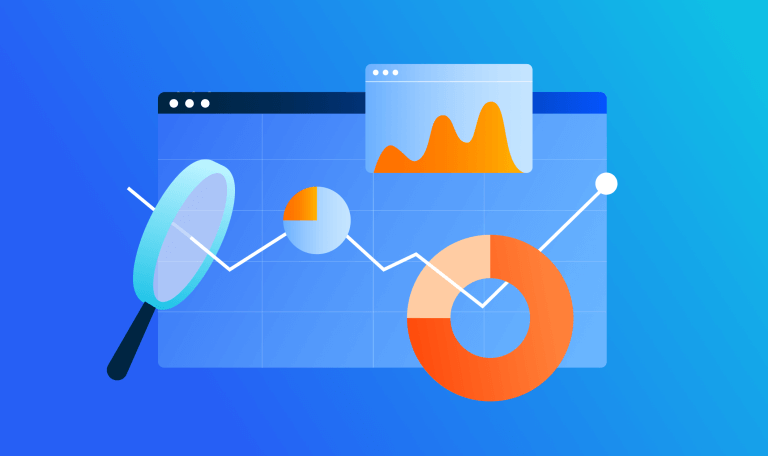7 Online Audiences You Really Shouldn’t Ignore

This isn’t just another article about how to do audience analysis.
I want you to take a moment and picture your audience. Don’t rush onto the next line yet, really think about it.
I’m going to take a guess and say the people or groups in your mind right now are the ones frequently buying your product or visiting your website. And you’re not wrong.
Your main customers are an important audience to have clearly defined. But what if I were to tell you that there are at least six more you need to add to the list. As a Content Marketing Manager myself, I am obsessed with understanding my audience (that’s you right now).
If you’re not paying attention to yours, you’re missing out on growth opportunities for your business. Tweet thisTo scale business impact, I analyze all seven online audiences. If you’re not paying attention to yours, you’re missing out on growth opportunities for your business.
Keep reading and find out about the 7 different online audiences you need to know to grow now.
1. Your actual audience
Okay, I’m starting with the obvious, so you can feel free to skip ahead.
Your actual audience includes the people who buy your product, read your content, or visit your website. Your services already help them and they could be anyone that shows interest, support, or enthusiasm for your company.
Get to know them. This is a great jumping-off point. Start by defining this group by running a demographic audience analysis on your website.
For example, Similarweb gives you a clear picture of the demographics of your existing visitors. Note the distribution of age, gender, location, etc.
Your actual audience is already hooked on what you have to offer. Your job now: engage your audience and improve their experience. Make sure this audience is always in the loop on new features, product updates, or company announcements as these present important opportunities for new sales and higher ROI.
Your actual audience is already hooked on what you have to offer. Your job now: engage them and improve their experience. Tweet thisPro Tip: Keep a close eye on any competitors that share the same audience as you (also known as audience overlap) and watch how they address users’ needs over time. If they’re running special campaigns, product pivots, or new promotions, this could reflect changes in customer behavior that you’ll also need to address.
2. Your target audience
The target audience is the group of people you aim to engage. This specific audience is defined by you. You might be asking yourself? Isn’t this the same as my actual audience?
It depends.
You might not be reaching your entire target audience. And although you ideally want this group to align with your actual audience, that may not always be the case due to competition, market health, or even timing.
Your goal here is to gather and interpret information on the people who are most likely to consume your product. Again a good starting point is to look at your existing audience and competitors. If they’re reaching a certain group that you’re not, that might be your target audience.
Start by breaking your audience analysis down into categories or types of target audiences. Typically you will define them according to:
- Demographics
- Interest
- Consumer behavior
- Product-specific criteria
- Purchase intention or funnel stage
Set your priorities and begin targeting accordingly with marketing campaigns specifically tailored to each persona you’re speaking with.
3. Potential partners
This type of audience may not be buying your product, but potential partners are an important group reading your content and visiting your website.
In today’s digital world, marketing partnerships provide ample opportunities to attract new users, grow your reach, and build your brand. And a well-developed partnership can do all of that organically.
For example, my team and I have done just that with an ongoing marketing partnership we have with Mention, a social media and monitoring platform. In the past year, we’ve co-hosted two webinars, swapped guest posts on each other’s blogs, and published a joint holiday report. Through the partnership, we’ve been able to tap into a wider audience.
Your website is the first impression that these potential partners will get of your business. Unprofessional language, slow loading times, or bad user experience can be off-putting.
Anything that you put on your websites should reflect your brand voice and core values. Make sure those are clear right off the bat, highlighting your unique value and expertise in your area. Positive customer reviews can help elevate this. Industry leaders will respond to that and know that you’re a strong company to partner with.
4. The social media followers
Now things are starting to get interesting.
If you’ve created a strong presence across your social media platforms you may find that many of your followers aren’t the actual target audience.
But that’s ok – their engagement in the form of likes, comments, and shares is invaluable even if they aren’t buying.
Your audience on Twitter could be different from your audience on Instagram and Facebook. Make sure you target the right audience for each platform. In addition to adjusting your tone to remain competitive on social media.
If you haven’t been investing in social media channels, don’t panic. But you might want to consider focusing some resources on the platforms most suitable for your audience to discover you. Diversification of your channels to reach your audience and grow brand awareness will be key in 2022.
Content-type:
Twitter – Twitter threads, customer support articles, or content
LinkedIn – blogs, status posts, carousel posts, polls
Facebook – video, stories, Live video, status posts
Reddit – Ask-me-anything (AMAs), subreddit threads
Instagram – reels, stories, influencer content
Quora – User-generated content (UGC) customer support, blog
Tips to find your audience across social platforms:
- Twitter – Don’t forget to retweet, but keep it about 20% or less than the total volume of your tweets.
- LinkedIn – Invest in an employee advocacy program. “Content shared by employees receives 8x more engagement than content shared by brand channels.”
- Facebook – “Facebook Stories live at the top of the News Feed – which means they’re immune to the Facebook algorithm. This might be why more than half a billion people view Facebook Stories every day.”
- Reddit – “The site has a tough stance on self-promotion, which makes marketing tricky, and it’s easy to fall foul of Reddit’s strict guidelines. That means you need to take a more strategic approach that focuses on conversations and providing helpful or interesting content.” And be active.
- Instagram – Stay on top of feature updates/changes (like augmented reality filters) and capitalize on them as soon as possible.
- Quora – Search for specific topics and keywords related to your business and jump on those threads (don’t forget to bring your authority to the response). And make sure you create a brilliant bio because “Quora shows the first 50 characters in your profile as a tagline above each answer you give.”
Get more hacks to grow your online audience. Watch the webinar with social media gurus Mention:
5. The brand-new market
Launching into a new market? Read on. If not, bookmark this one for when you do.
Did you know that 80% of new product or market launches fail? Most of the time these unsuccessful outcomes occur because the market just wasn’t ready for whatever was being offered.
Typically, entering a new market means you’re expanding into a new country or region. Your target audience (i.e. website demographics) of your users will most likely stay the same, but users from all over the world will have different needs, opinions, and preferences.
Here are some questions to help you narrow your focus when you’re trying to reach an untapped market:
- How do customers, values, culture, or core beliefs vary?
- What are the pain points that you can address with your product? What is the solution your product offers for these issues?
- Which comparable products does the new audience currently use? How are you better?
- How and when are they most likely to purchase your product? (Is it seasonal, time-sensitive, one-time, or recurring; will they purchase online or offline, cash, or card, etc?)
- What can you offer as an incentive? What would be most attractive for your target audience in relation to your product (a discount, demo, free trial)?
Once you have a better idea of where you’re going and who you’re targeting, follow this approach created by Croud to move quickly on new opportunities, grow your audience, and double down on success.
- Explore – Make sure that all market expansion is powered by highly relevant, focused insight.
- Launch – The market rollout is governed by an established process for growth: land, validate, and course-correct as performance data becomes available.
- Expand – Turn a nascent market into a mature one. That process involves optimizing the media mix and embedding a constant, rigorous approach to test and learn.
6. The strangers
Strangers are those people who have never even heard of your company before. Unless you have a big name like Amazon, this could be a lot of people.
The strangers could encompass other groups on this list like your target audience and potential partners. They could also include people who don’t know you and who you aren’t targeting at the moment but might consider targeting in the future.
For the audience that already fits into your target market, with the right tools and digital insights, you can segment this market into smaller, more specifically defined groups (also known as customer segmentation).
Splitting potential markets into sub-groups makes them more approachable and helps you create more targeted and curated marketing materials for them to get to know your brand. This will be top-of-the-funnel content that provides valuable information while introducing people to who you are.
But what about the other bucket? The people who don’t fit into your target market?
I wouldn’t recommend you blow through any marketing budgets trying to convert this group, because sometimes it just isn’t the right product-user fit. But you can conduct surveys, polls, or interviews with this group and find out if it’s worth expanding your offering to meet wider needs. Getting specific answers as to what they’re looking for can be your first step in bringing them onto your team.
7. Last but not least… eye your competitors
Yes, your competitors count as a potential audience online. There’s a reason they say to keep your friends close and your enemies closer. Although I think describing your competitors as enemies might be a bit too harsh, I do think that you need to keep this group close.
If you’re not analyzing your competitors’ websites, content, or digital marketing strategies you should be. Because they are definitely looking at yours.
Keep that thought in the back of your mind for anything that you do online. Although competitors’ eyes on your site shouldn’t prevent you from launching a specific campaign or writing a certain blog, just don’t forget that they’ll be watching.
In other words, don’t be surprised if you see a recreation or a slight adaptation of one of your brilliant ideas from a competitor. Imitation is the finest form of flattery! The key here though, is that you need to analyze your competitors’ performance and their strategy to stay a step ahead.
Reach the right people, every time
No doubt, there are a lot of different people out there browsing through your website and social channels. As usual, technology is here to help you find the right audience and identify areas for growth.
With Similarweb Research Intelligence, you can easily track your audience, whether it’s competitors stealing your strategy, social visitors, your actual customers, or anyone else in between. Similarweb makes it simple to get access to instant insights and level up your own growth plan. Get started today and drill down into your audience analysis (for all 7 of them).
Get to know your audience on a deeper level
Contact us to set up a call with a market research specialist














